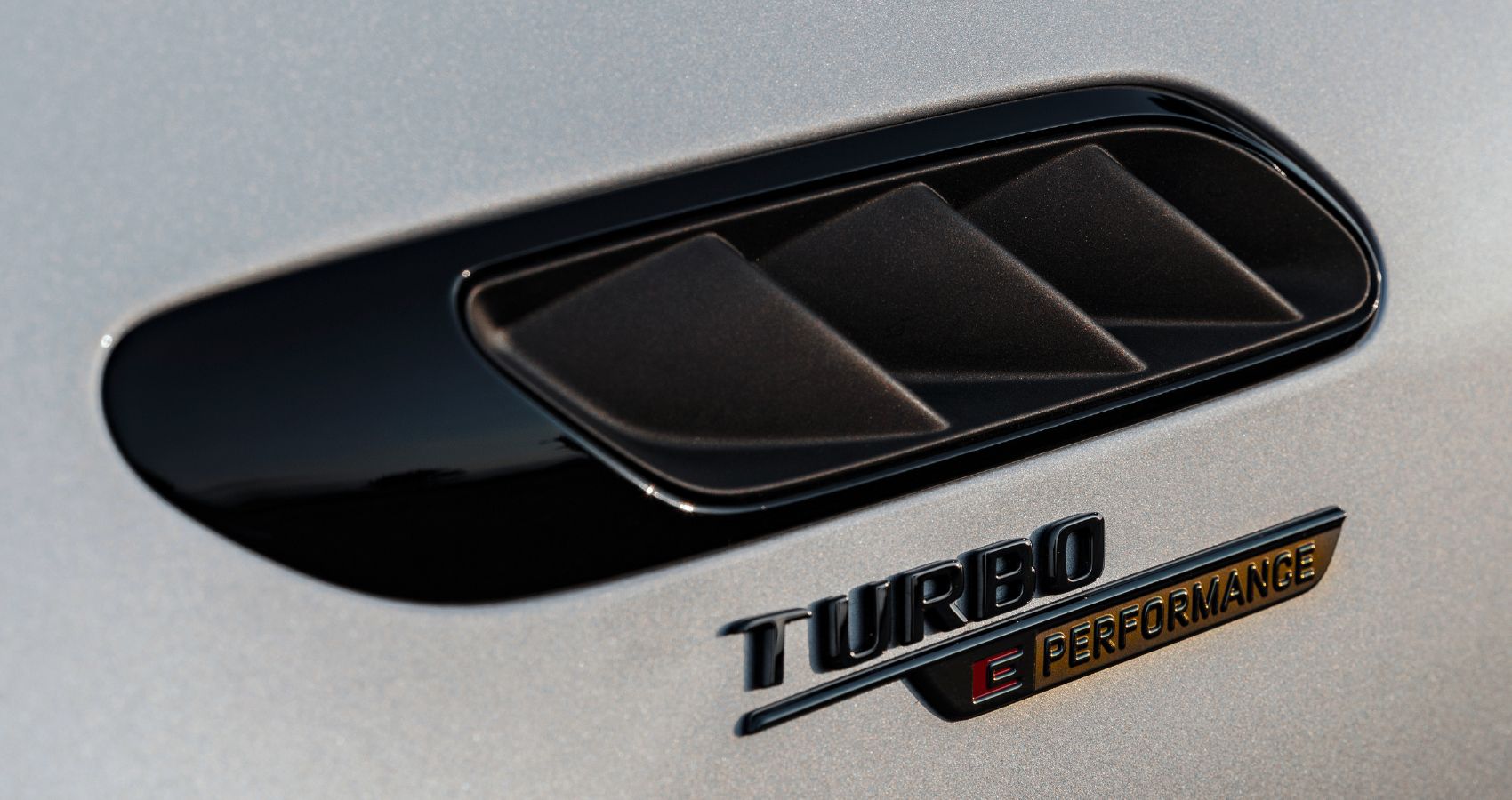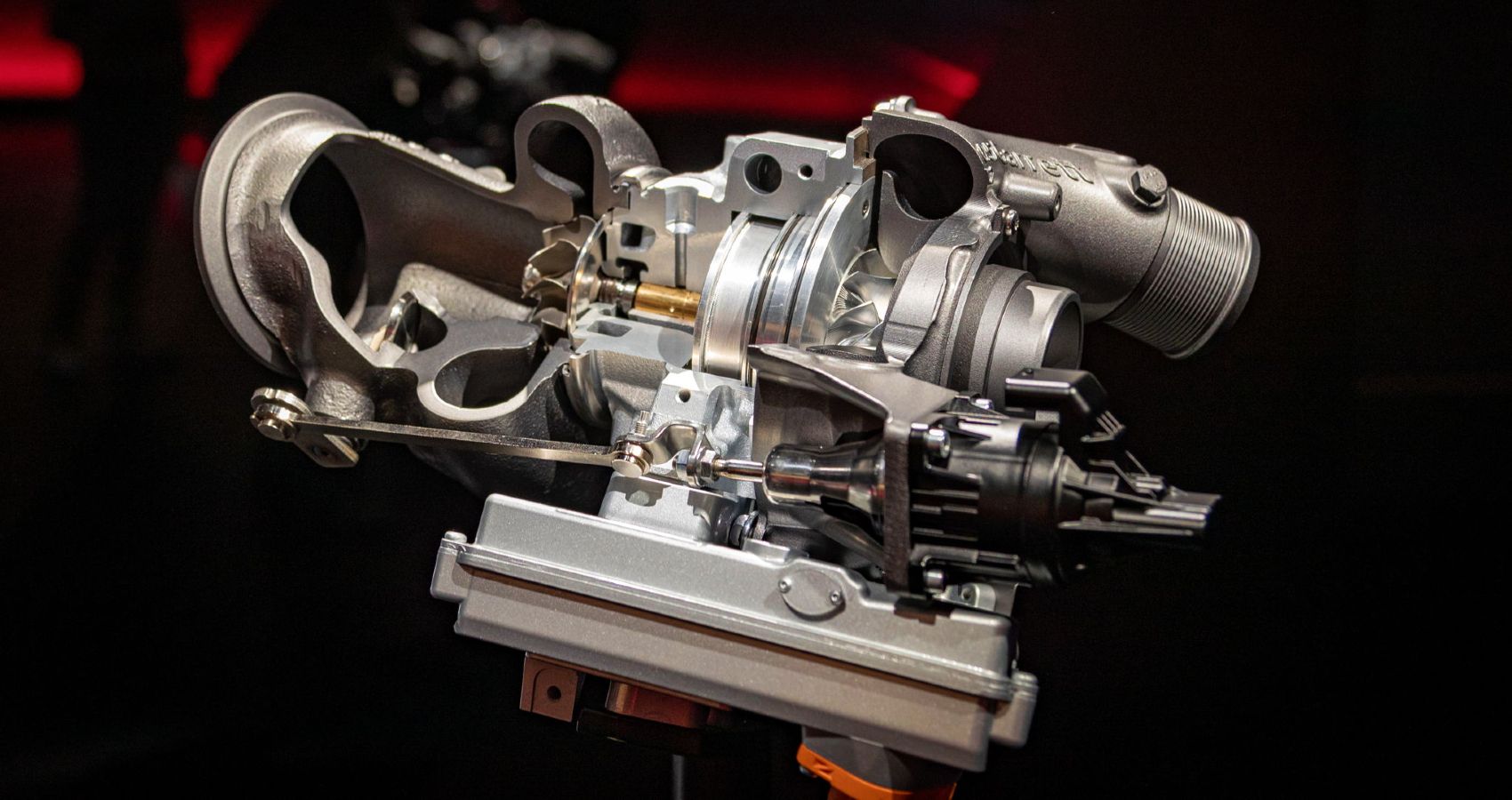The days of high-performance V-engines are numbered, and with most companies choosing the path of hybridization or electrification, luxury carmakers are desperately trying to appease purists with their latest technologies. However, very few succeed, while others get lost in the market.
No wonder Mercedes-Benz, AMG, and the Petronas F1 team have done a laudable job when it comes to building swift machines with vigorous powertrains. Thanks to the extensive knowledge, expertise, and aspirations of Mercedes’s engineers, they have again shocked the automotive industry with the world’s meanest four-cylinder engine.
While this may seem easy to some tech-heads, it wasn't easy for Mercedes to replace a twin-turbo V8 with an inline-four engine. German automakers are known for their cutting-edge technology, and Mercedes has justified its brand by incorporating Formula One technology into a road-legal sports sedan.
Last week, we saw the revelation of the new Mercedes-AMG C 63 S E Performance, where Mercedes-AMG has outfitted the C 63 S E with a hybrid powertrain and a heap of performance upgrades that some carmakers just imagine as a concept. However, most credits go to the Mercedes-AMG Petronas F1 team, and below, we'll talk about how our peeps from Affalterbach developed this fancy technology.
Mercedes-AMG Petronas F1 Team’s Masterful Hybrid Technologies
Mercedes-AMG has brought F1 technology to the roads with the advent of the new AMG C 63 S E Performance sedan, which debuted just recently. AMG, along with Petronas F1, has incorporated its fine hybrid technology into the M139L twin-turbo four-cylinder engine.
First, they equipped the M139L 2.0-liter twin-turbo engine with a two-stage fuel injection system. The first stage uses fast and precise Piezo injectors to deliver fuel into the combustion chambers at a rate of 200 bars. The second stage adds intake manifold duct injection with solenoid valves to help the engine meet its highest potential.
Secondly, Petronas engineers have blessed the M139L engine with high-performance electric turbochargers instead of regular gas turbochargers to milk the best of the engine. According to Mercedes-AMG, the electric gas turbochargers eliminate lags and offer continuous power to the engine and optimize overall efficiency.
As a result, this engine breaks its record to achieve a massive 476 horsepower at 6,750 rpm and 402 lb-ft of twist. With this inside, the new AMG C 63 S E Performance can accelerate from 0 to 60 seconds in just 3.3 seconds, faster than most performance sedans in the market.
The Gas-Electric Turbochargers Make All The Difference
The redesigned M139 2.0-liter twin-turbocharged engine is fitted with two electric-gas turbochargers integrated into the exhaust manifolds. According to Mercedes, these turbochargers are significantly larger than the ones used in the SL 43 and C43 4Matic. The larger turbochargers allow higher airflow rates to deliver more power, which translates to faster acceleration.
The gas-electric turbochargers come equipped with an electric motor of around four centimeters in size, fitted into the turbocharger shaft between the turbine wheel and the compressor wheel. The engine is powered by a 400V electrical circuit, and the motor in the turbocharger operates at a speed of 150,000 rpm to deliver an insane engine response.
The electric motor drives the turbocharger’s shaft to accelerate the compressor wheels before gas flows through the drive. This ensures a quick response from the turbochargers and significantly improves acceleration from idle speed to the rev range.
In addition, the high-speed electric motor inside the turbochargers offers higher torque at lower revs to increase the overall agility and significantly increase the acceleration. Hence, the turbocharger can boost pressure even when the driver takes their foot off the accelerator or brake pedal.
The AMG High-Performance Battery Gets The Petronas Treatment
The new Mercedes-AMG C 63 S E Performance sedan uses a hybrid engine layout where the 2.0-liter twin-turbocharged engine and 201-hp high-performance electric motors join hands to offer 680 horsepower and 752 lb-ft of torque.
The electric motor draws power from a 6.1 kWh high-performance battery that offers a continuous output of 70 kW for constantly developing 94 horsepower and a peak output of 150 kW to provide 201 horsepower at 13,500 rpm for ten seconds. The 6.1 kW battery offers 8 miles of all-electric range, and according to Mercedes, "The battery is designed for fast power delivery and draw, not for the longest possible range."
The 6.1 kW lithium-ion HPB weighs only 196 pounds and is used by the hybrid racing cars of the Mercedes-AMG Petronas F1 team. The HPB is light and offers high power readily to offer brisk acceleration. Thus, the car stays on its toes and provides a faster powertrain response when needed. On top of that, the battery unit is equipped with a capable cooling system to keep the battery temperatures in check for better performance and safety.
The Mercedes-AMG Petronas F1 Derived Cooling System
With such powerful and sophisticated high-performance powertrains, batteries, and other mechanicals working in tandem to offer staggering performance, flawless cooling is crucial for optimizing performance and ensuring safety.
Mercedes-AMG and the Petronas F1 team jointly developed a high-performance cooling system for the battery and engine. Engineers have developed new modules which are only one millimeter thin and attached to a high-pressure pump through which 14 liters of coolant circulates the entire battery cells. Thus, the system ensures that the battery has an average temperature of 45 degrees even while the car is hitting fast laps.
On top of that, the hybrid powertrain is equipped with another F1-inspired cooling system to keep it protected from high temperatures. The engine is fitted with a pair of high-performance mechanical water pumps. The first pump cools the cylinder heads, whereas the second pump cools the crankcase. An ECU monitors this cooling system. So, when the driver initiates a cold start, the cooling system remains passive until the engine is warmed up.
Source: Mercedes-Benz




.jpg)
.jpg)